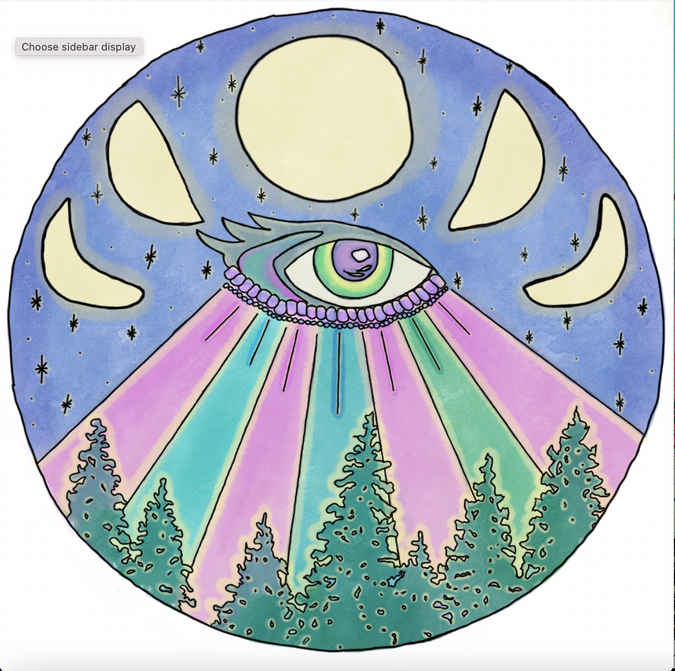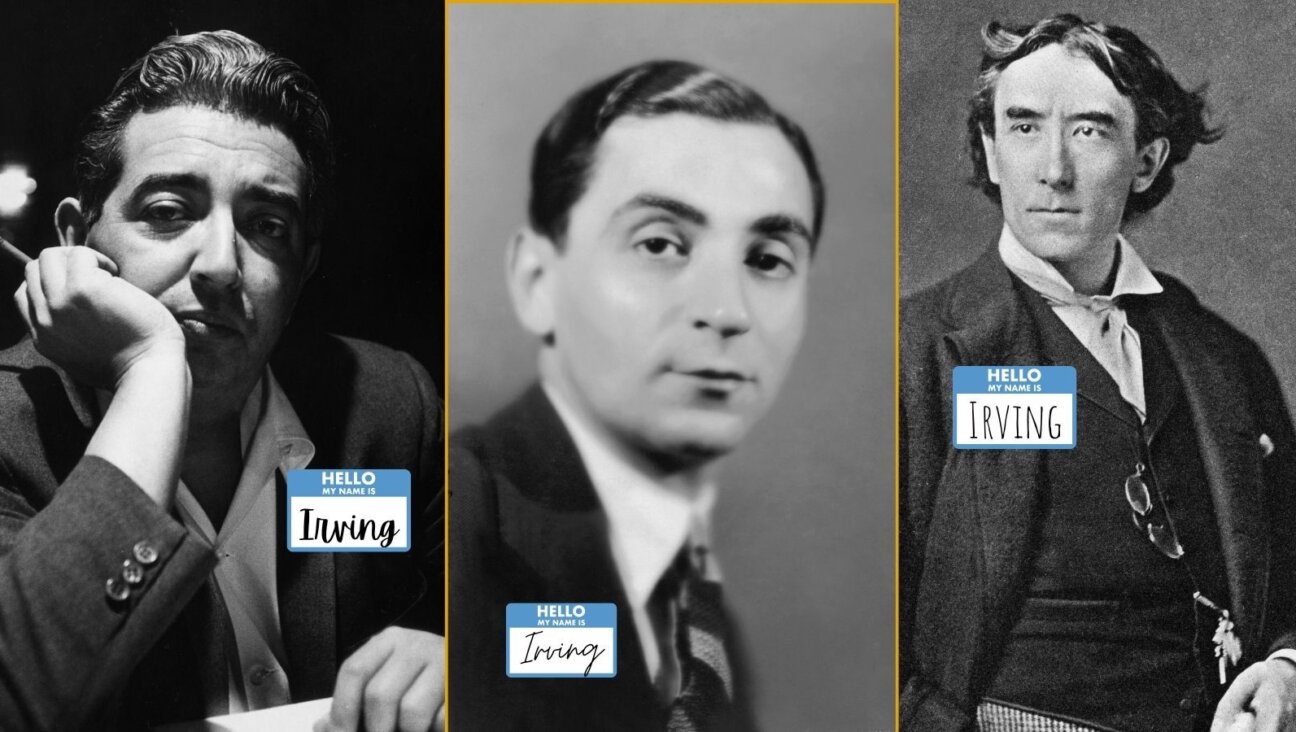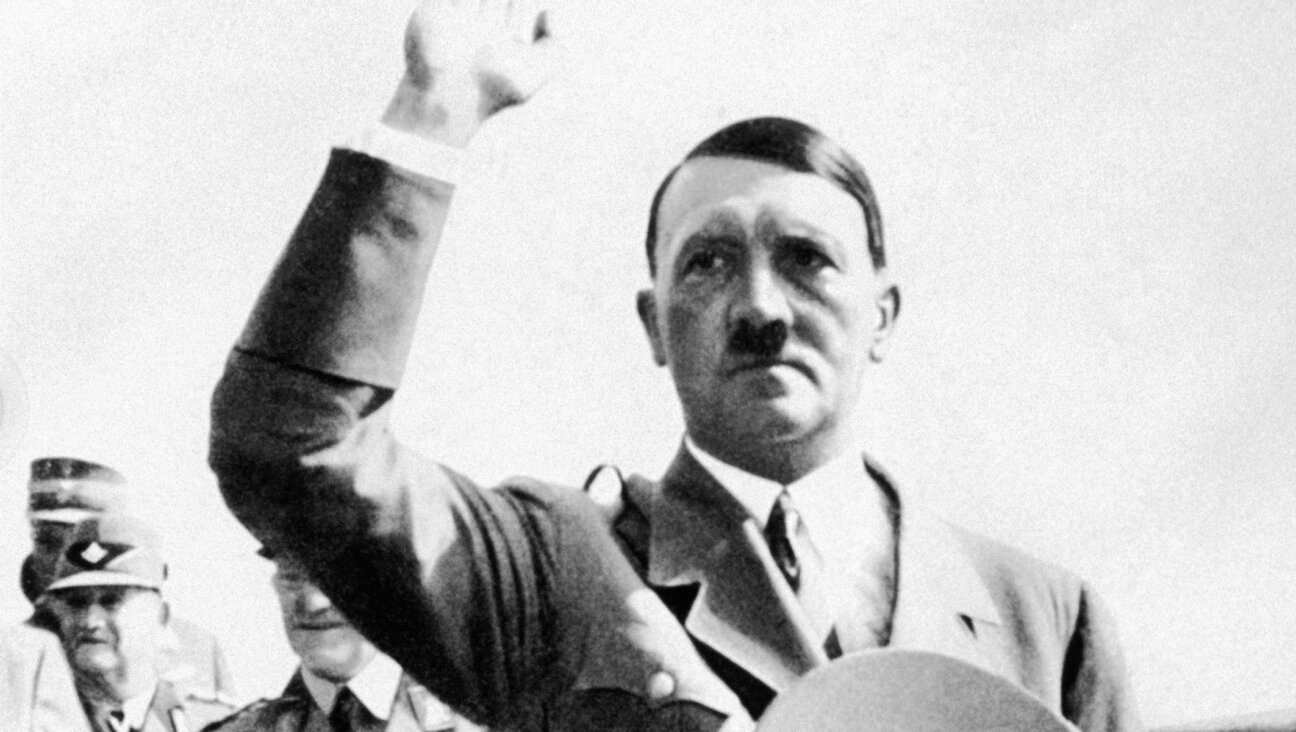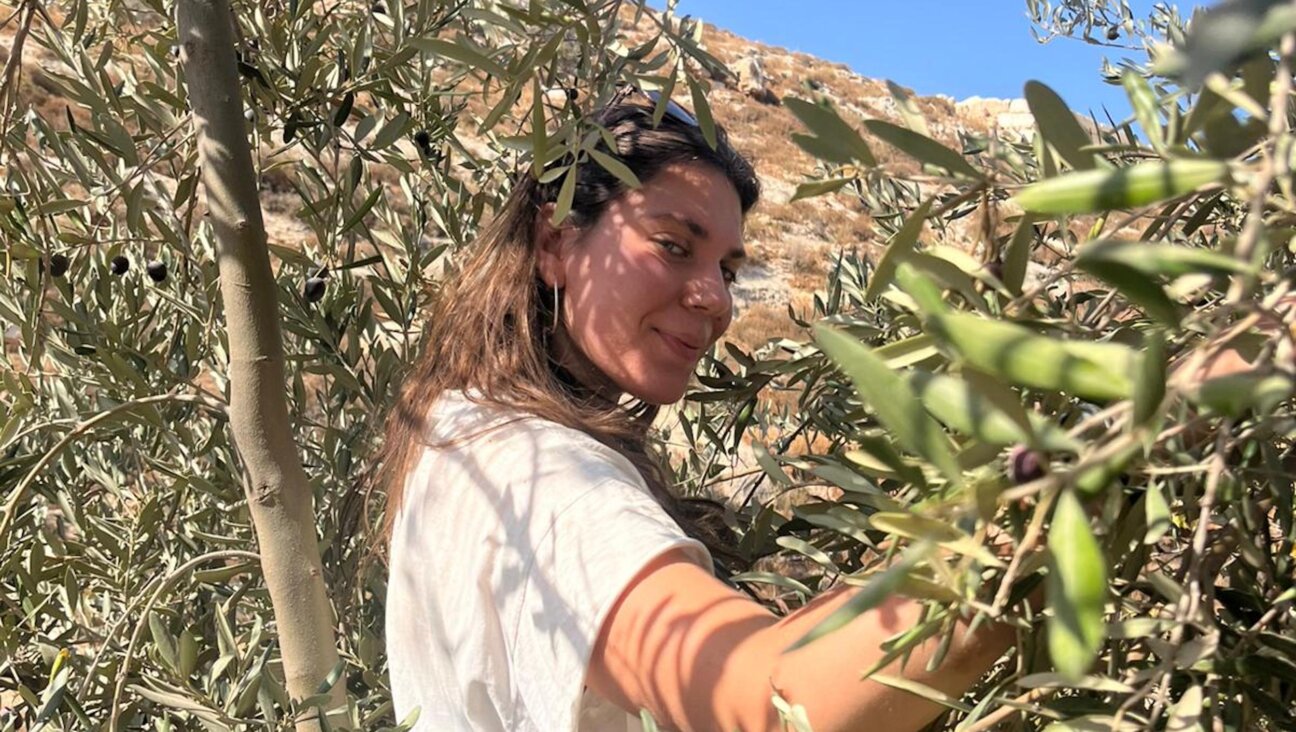Finally, a calendar that embraces the miraculous and circular nature of Jewish time

Graphic by Angelie Zaslavsky
The past two years, the High Holidays have come late in autumn, requiring several sweaters and rain coats, especially for last year’s outdoor pandemic services. This year, Jews around the world are startled to discover that with September barely underway, we’re closing in on early Rosh Hashanah.
Holidays sneak up every year, but Jewish holidays are even harder to keep track of; they don’t fit with the Gregorian calendar most of us use to track and organize the rest of our lives. Instead, Jewish time moves in layered, repetitive cycles that often feel divorced from the linear way in which we understand time in the Western world.
“When we get so used to something, we don’t even see it. It just becomes ingrained in our experience. It’s really a lost opportunity,” said Jorian Polis Schutz, creator of the Misaviv calendar. “The Hebrew calendar is a miracle. It’s what constitutes our people, our time — it is what has kept us alive; civilizations that lose their calendars lose themselves. A sense of time for a people, for a culture, is essential.”
Schutz created a new way to ground us in Jewish time, an interpretive calendar called Misaviv, which means “around” in Hebrew. Each month is a circle composed of wedges representing the weeks, and each wedge has seven sections, marching inward in concentric circles. Shabbat sits in the middle of each month, anchoring the passage of time.

The circular design divides the month into wedges representing the weeks; here we see the month of Elul. Image by Malka Langermann
The idea came to Schutz during last shmita year, when he was studying in a yeshiva. This year’s calendar, as we arrive again at a shmita year, when fields like fallow and debts are forgiven, brings the project full circle.
Each month is illustrated by a different artist, highlighting the themes of that month as understood by the artist, explained in a statement in the back of the calendar. A ram stares out from Elul — the current month — in which we begin to sound the shofar, drawn by artist Elke Sudin. Shvat, the month of the new year of trees, is adorned with the seven species of Israel — including grapes, pomegranates and figs — created by Esty Raskin.

For Elul, artist Elke Sudin references the ram Abraham sacrificed in place of Isaac; the shofar we blow during Elul hearkens back to this biblical ram who reminds us of our covenant with God. Image by Elke Sudin
Other months draw deeply on Jewish text and tradition. Heshvan blooms with flowers of the rain that begin to fall in Israel in the autumn. But pillars can also be discerned in the background, which artist Melina Sonia Monteagudo drew from Midrashic teachings that say Heshvan, a month with no holidays, will be celebrated for the rebuilding of the Third Temple.
Some of the illustrations are interpretive. Yavni Bar-Yam, taking on Adar, made a collage full of outstretched hands representing Purim’s celebration and gift-giving. (His page is also a pattern for a mask; you can cut it out and wear it for Purim.) Kislev, by Chaya Malka Spilman, offers a psychedelic eye to guide us through the darkest month of the calendar.

Kislev is the darkest month. Artist Chaya Malka Spilman writes that “we turn to the in-sight (sic) of our ethereal visions and dreams.” Image by Chaya Malka Spilman
To Schutz, the art is even more central than the circle concept. “Really, the art is saying, every month we have an opportunity to connect,” he said. “Art is really just another version of the idea of praying for the month.”
The calendar is more of a conceptual framework than a useful tool; while holidays, both Jewish and secular, are listed, along with the yarzheits of major Jewish thinkers, the design makes it difficult to mark longer events such as trips or vacations — the non-linear understanding of time means you would have to zigzag a line through the calendar to mark off multiple days.

The month of Shvat contains the new year for the trees, Tu B’Shvat. Esty Raskin writes that while the grains represent basic nourishment, “the five fruits take center stage and represent pleasure and enjoyment.” Image by Esty Raskin
This cyclical understanding of time feels radical, offering a grounding rhythm during the blurred days of the pandemic; each week is presented as a new chance that, especially during the pandemic’s blurring days, I desperately need — every routine I attempt to instate to ground my life and give shape to the passing time at home eventually melts into ennui.
Yet with the repetitive movement of Jewish time, even new year’s resolutions can be made four times a year. We layer cycles on cycles: Shabbat each week; Rosh Chodesh, the celebration of the new moon, each month; four new years each year; one shmita year every seven years; a jubilee year every seven shmita cycles. Even the Torah is rolled back to its beginning each year. There are so many chances to start over, to get back up and engage.

For Adar, and Purim, Yavni Bar-Yam writes that the month is a time “to reap the blessings that come in the midst of contradictions” and offers a mask to wear. Image by Yavni Bar-Yam
This is what Schutz hopes Misaviv can offer — a meditation on time that reframes it and allows us to connect to the cycles and opportunities it presents. He doesn’t think the calendar will upend our lives, but simply offer a new framework that might shift our understanding of daily life and ground us in Jewish rhythm, ever so slightly.
This year’s Rosh Hashanah is particularly meaningful for those who are, like me, looking for fresh starts after the exhaustion and infighting bred by the pandemic.
At the end of the shmita year, Misaviv will close its experiment in time-keeping; this is its last year of publication. After giving us a new understanding of time, of the themes that guide our lives and religious tradition, it will leave us with a blank slate so we can consider for ourselves how we want to engage. But for one last year, it can guide us through a fresh start.

















